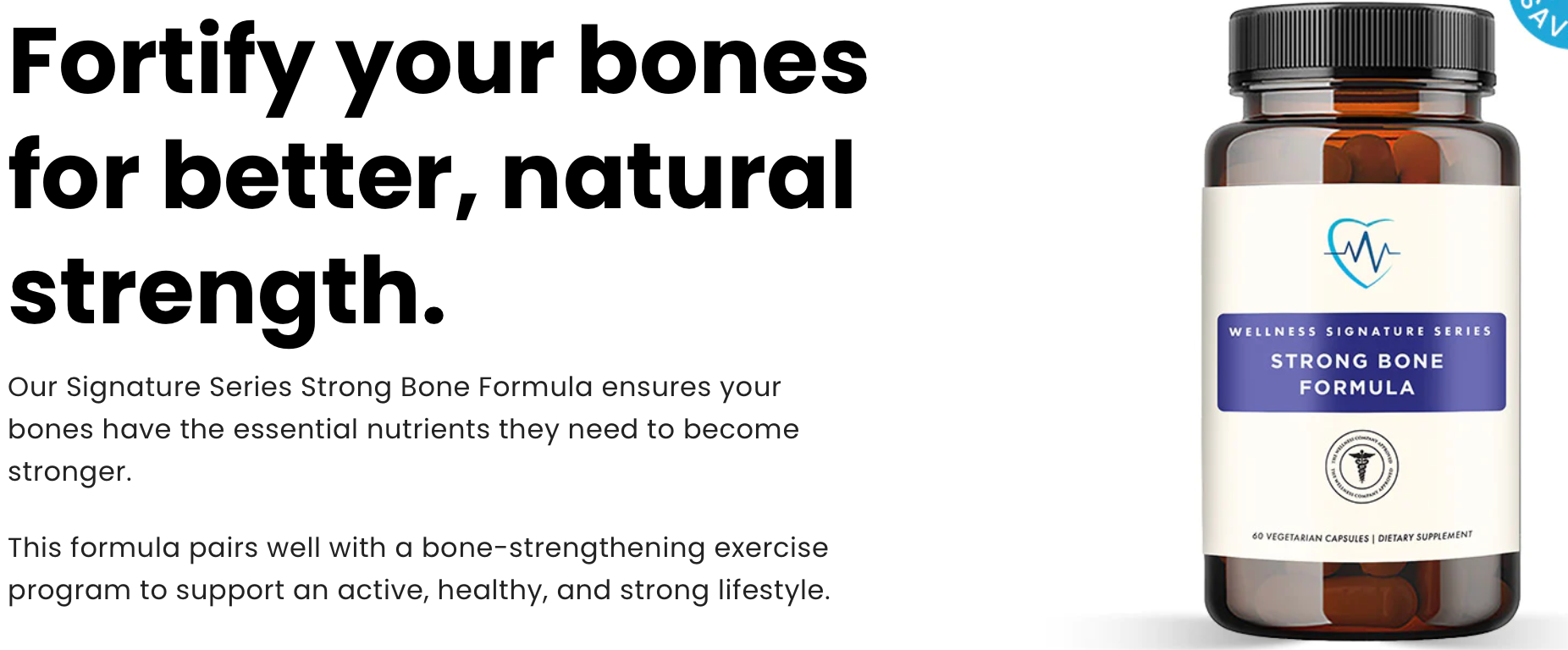Bone Health: The Nitty Gritty

By Dr. Richard Amerling, MD
Chief Academic Officer of The Wellness Company
What does a nephrologist know about bone, you ask? Well, quite a bit, actually! My interest in bone goes back to my college days when recovering from a broken leg (motorcycle accident) I started reading an orthopedic surgery textbook.
This experience was one of the reasons I went pre-med. In medical school in Belgium, I had the good fortune to work with one of the leading authorities on Paget’s disease of bone, Prof. Charles Nagant de Deuxchaisnes.
I credit Prof. Nagant with my deep skepticism about the use of bisphosphonates (more later). Then during my medical residency in New York, I got involved with the nephrology group who were doing a study of bone disease in kidney patients that required performing surgical bone biopsies and analyzing bone histology.
This drew me into specializing in nephrology, where I continued to perform bone biopsies and became an expert in the field of renal (kidney) bone disease. The kidneys play a central role in bone health and the majority of patients with kidney failure have serious issues with their bones, so I have seen a ton of bone disease over the years.
But most of you, gladly, do not have kidney disease, yet have legitimate concerns regarding bone health due to the large numbers of individuals diagnosed with osteoporosis, or osteopenia. Both conditions are defined primarily by numerical scores on bone density tests, which is itself highly problematic.
Masonry of Bone Building
Before addressing this, we need to discuss basic bone concepts. Bone is a fascinating, miraculous tissue that is complex and dynamic. It is synthesized in two steps: Bone matrix, a collagen-like protein (osteoid), is laid down by specialized cells called osteoblasts, much like a mason lays down cement.
Then the mason adds bricks; the osteoid is mineralized by deposition of calcium and pyrophosphate to form calcium hydroxyapatite, a crystalline substance that gives bone its rigidity. Herein ends the masonry analogy. Once the wall is built, the mason goes home to dinner with his wife.
The bone mason however goes back to work demolishing and rebuilding the wall, continuously! This process, that we call bone remodeling, is absolutely essential to bone health. Bone remodeling is guided by mechanical stress, reinforcing areas that bear heavy loads, for example. Microfractures are constantly being repaired by this process.
Remodeling requires another specialized cell type, the osteoclast, to reabsorb and recycle the mineral content of bone, allowing for new bone to be laid down by the osteoblasts. Now we can discuss the problems with bisphosphonates, such as alendronate (Fosamax), and newer biologicals such as denosumab (Prolia): They all inhibit osteoclasts, in some cases irreversibly. The idea that blocking bone resorption will tip the balance towards bone formation is hopelessly naïve.
These agents stop bone remodeling, which over time weakens bones! This explains the occurrence of severe fractures of the femur, and of the jaw in patients taking these agents long term. While rare, these devastating injuries are clearly caused by the drugs as they are not seen in unexposed individuals. In my view, these medications should never be prescribed and should in fact be withdrawn from the market. Sadly, millions of people are taking them.
What About Calcium and Vitamin D?
Again, naivete reigns supreme. Yes, bones need calcium and vitamin D aids in absorbing calcium from the gut, but what then? How does that calcium get into bones to strengthen them?
Well, it’s an extraordinarily complex process, beyond the scope of this article. But the short answer is, it doesn’t just happen, and the calcium can end up where it shouldn’t go, such as in your arteries. Large doses of calcium and vitamin D may lead to vascular and cardiac calcification, and decreased bone density! We observe this frequently in dialysis patients where the process is accelerated, but it also occurs in the general population.
Two key hormones guide calcium into bones and keep it away from soft tissues: Osteocalcin and matrix GLA-protein. Vitamins A and D are required to produce these, and vitamin K2 is needed to activate them.
Vitamin K2 is not abundant in food and is completely absent from heavily processed junk that is sadly being overconsumed. Principal sources are a fermented soybean product called natto (popular in certain regions of Japan, but unpalatable for most), fermented dairy (some cheeses), and the yolk of pasture-raised chicken eggs. K2 levels in the blood can be estimated using sophisticated tests but cannot be measured accurately or practically in the general population. It exists in several forms; the MK-7 variety is recommended.
My special Bone Formula is available on The Wellness Company. It contains balanced amounts of vitamins D, A, and K2, along with some calcium and magnesium. The calcium added is modest and is there for those who might not get enough due to poor tolerance of dairy products.
Magnesium is also necessary for bone formation and is lacking in many diets. I’ve been taking these supplements separately for years. Together with weight-bearing and resistance exercise, the Bone Formula will keep your bones healthy well into your senior years. And at that point we can discuss the many benefits of hormone replacement therapy.
- - - - - - - - - - - - - - - - - - - - - - - - - - - - - - - - - -
About the Author:
Dr. Richard Amerling is a consultant Nephrologist/Internist with over 30 years experience. He specializes in diseases of the kidney, metabolic syndrome, diabetes mellitus, and hypertension. He is on the Chief Medical Board of The Wellness Company founded in 2022.
His areas of specialty include:
- Dialysis, including peritoneal and home dialysis
- Chronic kidney disease
- Metabolic syndrome
- Transplantation
- Metabolic bone disease
- Guideline critiques
- Health care economics and politics




